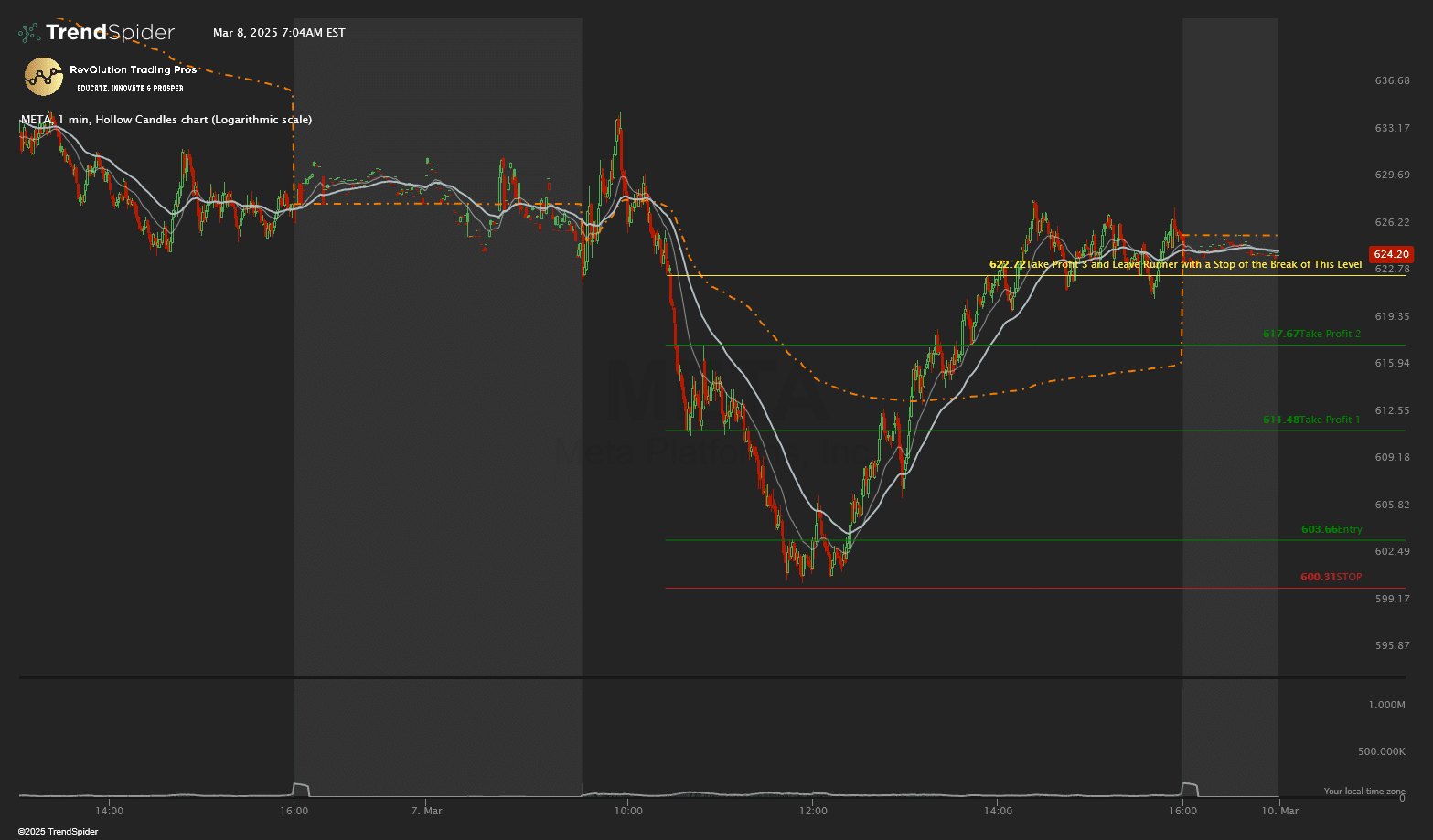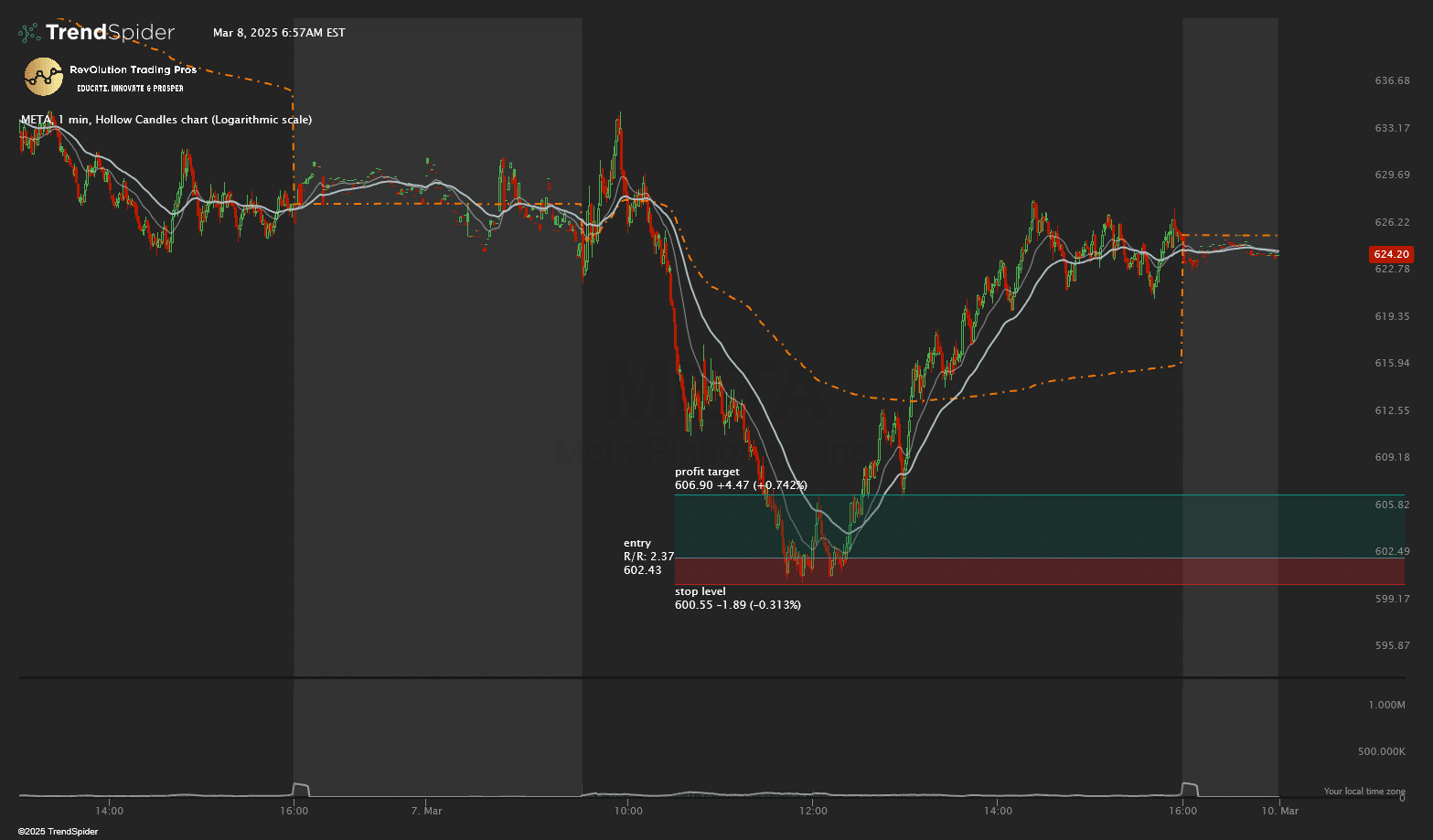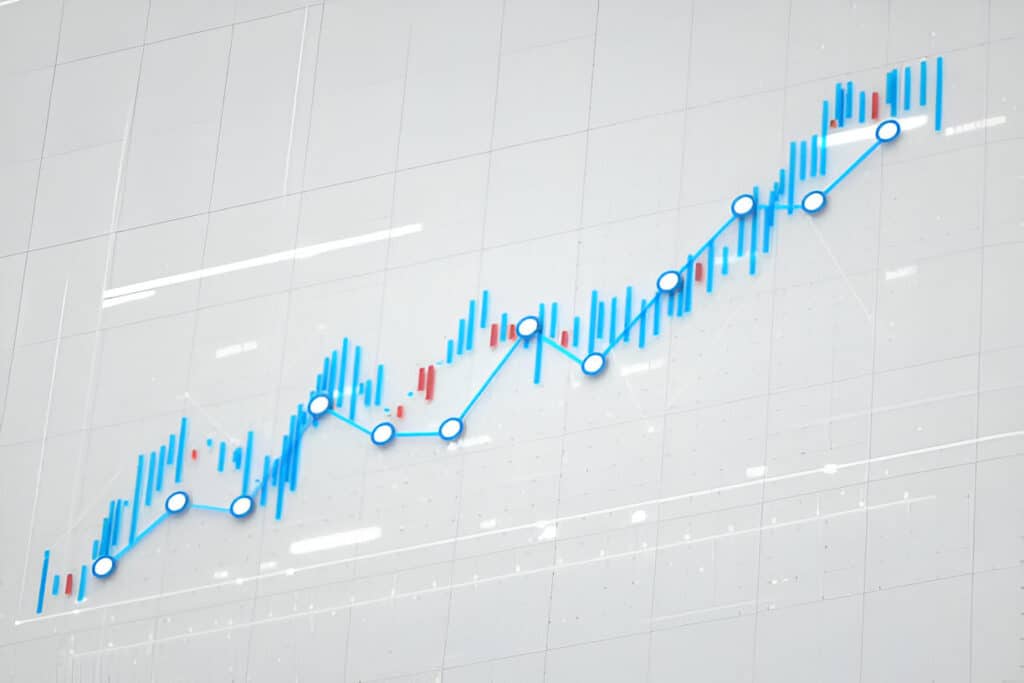15 Essential Day Trading Tips for Beginners (2025)
15 Essential Day Trading Tips for Beginners(2025)

By Revolution Trading Pros | Updated March 8, 2025
Are you curious about day trading but feel overwhelmed by the complexity? You’re not alone. Day trading—the practice of buying and selling financial instruments within a single trading day—can be both exciting and intimidating for newcomers. While the potential for profits exists, the risks are equally significant.
In this comprehensive guide, we’ll walk you through everything you need to know to start day trading safely and effectively. From fundamental concepts to advanced strategies, we’ve compiled 15 essential tips that can help you navigate the fast-paced world of day trading.
What You’ll Learn in This Guide
- What day trading is and how it works in simple terms
- Step-by-step process to start day trading responsibly
- 15 proven tips to avoid common beginner mistakes
- Detailed strategies suitable for new traders
- Real challenges you’ll face and how to overcome them
- Expert answers to frequently asked questions
What is Day Trading? Understanding the Basics
Day trading involves executing multiple trades within a single market day, never holding positions overnight. Unlike long-term investing, day traders aim to profit from small price movements that occur throughout trading hours.
The principle is straightforward: buy at a lower price and sell at a higher price within the same day. However, the execution requires skill, discipline, and careful timing.
Key Characteristics of Day Trading:
- Short time horizons: Positions last minutes to hours, never overnight
- Frequent transactions: Multiple trades executed daily
- Technical analysis: Heavy reliance on charts, patterns, and indicators
- Immediate decision-making: Quick reactions to market changes
- Active management: Constant monitoring during trading hours
Day traders typically focus on highly liquid markets such as stocks, stock options, futures, currencies (forex), or cryptocurrencies. Each market has its own trading hours, regulations, and characteristics that influence trading strategies.
How to Start Day Trading: A Step-by-Step Approach
Starting your day trading journey requires careful preparation. Following these steps will help you build a solid foundation:

Step 1: Build Your Knowledge Foundation
Before risking real money, invest time in understanding:
- Market mechanics: How exchanges work, order types, and market hours
- Technical analysis: Chart patterns, indicators, and price action
- Fundamental analysis: Economic indicators and news impacts
- Trading psychology: Managing emotions and maintaining discipline
Educational resources include books, and market analysis tools. Consider starting with classics like “Trading in the Zone” by Mark Douglas or “Technical Analysis of the Financial Markets” by John Murphy.
Step 2: Create a Detailed Trading Plan

A trading plan serves as your personal roadmap and should include:
- Trading goals: Realistic profit targets and career objectives
- Risk tolerance: Maximum acceptable loss per trade and per day
- Trading strategies: Specific setups, entry and exit criteria
- Time commitment: Hours dedicated to trading and analysis
- Performance metrics: How you’ll measure success beyond profits
Your plan should be written down and regularly reviewed. The act of documenting your strategy helps clarify your thinking and provides accountability.
Remember, successful traders plan the trade and trade the plan—there’s no other way around it!
Download Trading Plan Here:
Step 3: Allocate Your Trading Capital Wisely
Proper capital allocation is crucial for day trading success:
- Set aside funds exclusively for trading
- Only use money you can afford to lose
- For stock day trading, be aware of the Pattern Day Trader (PDT) rule, which requires a minimum of $25,000 in your account if you make more than three day trades in a five-day period
- Consider starting with more than the minimum to provide a buffer against losses
A common recommendation is to risk no more than 1-2% of your total trading capital on any single trade. This approach helps preserve your capital during inevitable losing streaks.
Step 4: Select the Right Trading Platform
Your trading platform is your gateway to the markets, so choose carefully:
- Reliability: Consistent uptime during market hours
- Execution speed: Fast order processing with minimal slippage
- Analysis tools: Built-in charting capabilities and indicators
- Costs: Competitive commission structures and transparent fees
- User interface: Intuitive design that matches your preferences
Popular platforms among day traders include Thinkorswim by Charles Scwab, Interactive Brokers, TradeStation, and TradeZero. Many brokers offer demo accounts, allowing you to practice with virtual money before committing real capital.
Step 5: Start Small and Scale Gradually
When beginning your trading journey:
- Focus on 1-2 instruments initially (specific stocks, ETFs, or futures contracts)
- Use minimal position sizes to limit risk
- Consider trading during less volatile market hours
- Gradually increase position size as your skills improve
- Track all trades in a trading journal to analyze performance
Many successful traders started by mastering a single strategy on a single instrument before expanding their approach.
15 Essential Day Trading Tips for Beginners
Tip 1: Develop a Structured Morning Routine
Successful day trading begins before the market opens:
- Wake up early to review pre-market movements
- Analyze overnight news that could impact your watchlist
- Identify key price levels and potential setups for the day
- Review your trading plan and set daily goals
- Prepare mentally with focused breathing or visualization
A consistent morning routine helps establish the right mindset and ensures you’re fully prepared when the market opens.
Tip 2: Master Risk Management Before Seeking Profits

Risk management is the foundation of trading longevity:
- Always use stop-loss orders to limit potential losses
- Calculate position sizes based on your risk tolerance
- Never risk more than 1-2% of your account on a single trade
- Know exactly how much you could lose before entering any position
- Consider using a reward-to-risk ratio of at least 2:1 (potential profit twice the risk)
Even the best trading strategies fail occasionally. Proper risk management ensures these failures don’t significantly damage your trading capital.
Tip 3: Conduct Thorough Pre-Market Research
Informed traders make better decisions:
- Review economic calendars for scheduled announcements
- Check earnings reports that might affect market sentiment
- Monitor global markets that trade before your local exchange
- Identify sectors showing unusual pre-market activity
- Create a watchlist of potential opportunities based on your findings
Pre-market research helps you anticipate market movements rather than merely reacting to them.
Tip 4: Trade the Right Market Hours
Not all trading hours are created equal:
- The first hour after market open (9:30-10:30 AM EST for US markets) often brings volatility and opportunities but can be challenging for beginners
- The middle of the day (11:30 AM-2:00 PM EST) typically has less volatility and might be better for novice traders
- The final hour before close (3:00-4:00 PM EST) often sees increased activity as institutions adjust positions
Begin by trading during hours that match your strategy and temperament, then expand as your skills develop.
Tip 5: Use Limit Orders Instead of Market Orders
Order execution matters for day traders:
- Limit orders let you specify the exact price you’re willing to pay or accept
- Market orders execute immediately at the best available price, which may be worse than expected during volatile periods
- Using limit orders helps control transaction costs and prevents slippage
- Place your orders slightly away from obvious support/resistance levels where many orders cluster
The small price improvements gained through proper order execution can significantly impact your bottom line over hundreds of trades.
Tip 6: Focus on Highly Liquid Stocks
Liquidity is essential for successful day trading:
- Highly liquid stocks allow you to enter and exit positions easily
- Look for stocks trading at least 1 million shares daily
- Higher volume typically means tighter spreads between bid and ask prices
- Mid to large-cap stocks often provide better liquidity than small-caps
- Popular ETFs like SPY, QQQ, and IWM offer excellent liquidity
Sufficient liquidity ensures you can execute trades quickly and at competitive prices.
Tip 7: Avoid Low-Priced and Penny Stocks
Despite their appeal, cheap stocks come with significant drawbacks:
- Stocks priced below $5 (penny stocks) often have wide spreads
- Low-priced securities are more susceptible to manipulation
- Order execution can be challenging due to limited liquidity
- Price movements may be erratic and difficult to predict
- Regulatory oversight is typically less stringent
Focus instead on established companies with moderate price ranges that attract institutional interest.
Tip 8: Set Realistic Profit Targets
Managing expectations is crucial for long-term success:
- Aim for consistent small gains rather than occasional home runs
- Be satisfied with capturing a portion of a price move, not the entire trend
- Professional day traders often target 0.5-1.5% profit per successful trade
- Calculate your target profit-to-loss ratio and stick to it
- Recognize that compounding modest gains can lead to significant growth over time
Realistic profit targets help maintain disciplined exits and prevent giving back gains on winning trades.
Tip 9: Maintain a Detailed Trading Journal
Systematic record-keeping accelerates improvement:
- Record entry and exit prices, position sizes, and specific setups
- Document your emotional state during trading sessions
- Include screenshots of your trades for visual reference
- Note market conditions and relevant news events
- Regularly review your journal to identify patterns in both winning and losing trades
Trading journals transform experience into insight by making patterns visible over time.
Tip 10: Learn One Strategy Thoroughly Before Adding Others
Mastery requires focus:
- Choose a single strategy that resonates with your personality
- Practice this strategy consistently until it becomes second nature
- Understand the ideal market conditions for your chosen approach
- Measure its effectiveness through statistical analysis
- Only add new strategies after demonstrating proficiency with the first
Jack of all trades, master of none applies strongly to day trading. Depth beats breadth for new traders.
Tip 11: Respect Support and Resistance Levels
Price tends to react predictably around certain levels:
- Support levels are prices where buying pressure typically exceeds selling pressure
- Resistance levels are prices where selling pressure typically exceeds buying pressure
- These levels can be identified through previous highs/lows, moving averages, or Fibonacci retracements
- Many traders place orders near these levels, creating self-fulfilling prophecies
- Failed breakouts or breakdowns from these levels often create excellent trading opportunities
Learning to identify and trade around key levels provides a structural advantage in day trading.
Tip 12: Use Multiple Time Frames for Analysis
Comprehensive analysis requires various perspectives:
- Start with a longer time frame (daily chart) to identify the primary trend
- Move to an intermediate time frame (hourly chart) to spot the current market structure
- Finally, use a shorter time frame (5-15 minute chart) for precise entry and exit timing
- Ensure your trading direction aligns with the trend on higher time frames
- Look for confluence where signals align across multiple time frames
This top-down approach helps ensure you’re trading in harmony with different market cycles.
Tip 13: Implement the 2% Rule
Capital preservation demands strict risk limits:
- Never risk more than 2% of your total trading capital on a single trade
- If your account is $25,000, your maximum risk per trade is $500
- For a stock with a $1 stop loss, your maximum position would be 500 shares
- Consider implementing a daily loss limit of 5-6% of your account
- Stop trading for the day if you reach your daily loss limit
The 2% rule ensures that even a string of consecutive losses won’t significantly deplete your capital.
Tip 14: Avoid Revenge Trading
Emotional reactions lead to poor decisions:
- Resist the urge to immediately recover losses through larger or riskier trades
- Take a short break after significant losses to regain emotional equilibrium
- Review failed trades objectively rather than emotionally
- Stick to your pre-determined position sizing regardless of recent results
- Remember that patience often returns more profit than aggression
Revenge trading transforms temporary setbacks into significant losses. Trading is a marathon, not a sprint.
Tip 15: Continue Learning and Adapting
Markets evolve, and successful traders evolve with them:
- Allocate regular time for studying market behavior
- Follow professional traders who share educational content
- Join trading communities to exchange ideas and experiences
- Experiment with new techniques in a simulator before using real capital
- Regularly update your trading plan based on market changes and personal growth
The best traders view themselves as perpetual students of the market.
Proven Day Trading Strategies for Beginners
Trend Following Strategy
Trend following capitalizes on directional momentum:
- Identify stocks moving strongly in one direction
- Enter trades in the direction of the established trend
- Use moving averages (20-period and 50-period) to confirm trend direction
- Exit when price closes below a key moving average (for uptrends) or above it (for downtrends)
- Implement tighter stops as the trend matures to protect profits
This strategy works best in strongly trending markets and requires patience to ride momentum.
Breakout Trading Strategy
Breakout trading captures explosive moves after consolidation:
- Look for stocks trading in tight ranges (consolidation)
- Identify key resistance levels that have rejected price multiple times
- Enter when price convincingly breaks above resistance on increased volume
- Set initial stops just below the breakout level
- Target the height of the consolidation pattern added to the breakout point
Breakouts work well during earnings season and when significant news affects a stock’s outlook.
Gap Trading Strategy
Gap trading exploits opening price disparities:
- Identify stocks that open significantly higher or lower than their previous close
- For gap-ups, look for initial selling pressure that stabilizes, then enter when price begins rising again
- For gap-downs, wait for selling exhaustion and enter when price forms a reversal pattern
- Use the pre-gap price action to identify potential support/resistance levels
- Set tight stops as gaps can quickly reverse
Gap trading requires quick analysis during the crucial first 30 minutes of trading.
Reversal Trading Strategy
Reversal trading aims to capture turning points:
- Look for stocks that have made extended moves in one direction
- Identify signs of exhaustion such as divergence between price and indicators
- Enter when price makes a definitive move against the previous trend
- Place stops beyond recent swing points to prevent false signal losses
- Take profits quickly as reversals often face counter-pressure
This higher-risk strategy requires excellent timing and should use smaller position sizes.
Common Day Trading Challenges and How to Overcome Them
Challenge 1: Emotional Trading
Trading triggers powerful emotions:
- Solution: Create detailed trading rules that remove subjective decision-making
- Practice mindfulness techniques to recognize emotional states
- Use mechanical entry and exit criteria rather than gut feelings
- Consider trading smaller sizes when emotions run high
- Maintain a separate trading diary focused solely on psychological aspects
Emotional control often differentiates successful traders from unsuccessful ones.
Challenge 2: Overtrading
Excessive trading depletes capital through commissions and poor setups:
- Solution: Define specific criteria that must be met before entering a trade
- Set a maximum number of trades per day
- Require minimum reward-to-risk ratios for all trades
- Implement mandatory rest periods between trades
- Review each potential trade against your written plan before execution
Quality consistently outperforms quantity in day trading.
Challenge 3: Information Overload
The abundance of data can lead to analysis paralysis:
- Solution: Define exactly which indicators and data points matter for your strategy
- Create a streamlined chart setup showing only essential information
- Disable notifications unrelated to your current trades
- Schedule specific times for news consumption rather than continuous monitoring
- Focus on mastering the interpretation of a few key indicators
Successful trading requires filtering signal from noise.
Challenge 4: Technical Issues
Hardware or connectivity problems can prove costly:
- Solution: Maintain backup internet connections
- Keep a secondary device ready for emergencies
- Use mobile trading apps as contingency options
- Have direct broker phone numbers available for order placement
- Consider using virtual private servers (VPS) for more reliable connections
Preparation for technical difficulties should be part of your trading plan.
Challenge 5: Market Volatility
Extreme price swings can trigger stop losses and create uncertainty:
- Solution: Reduce position sizes during highly volatile periods
- Widen stop losses to accommodate increased price fluctuations
- Consider switching to longer time frames during market turbulence
- Utilize volatility indicators like ATR (Average True Range) to adjust expectations
- Be willing to sit on the sidelines during unpredictable market conditions
Sometimes the best trade is no trade, especially during unusual volatility.
Frequently Asked Questions About Day Trading
How Much Money Do I Need to Start Day Trading?
The capital requirements for day trading vary by market:
- Stock market: $25,000 minimum for pattern day traders in the US (SEC requirement)
- Futures market: Typically $5,000-$10,000 depending on the contracts traded
- Forex market: Can start with as little as $500, though $2,000-$5,000 is recommended
- Cryptocurrency market: Can begin with a few hundred dollars on many exchanges
While you can legally start with these minimums, professional traders often recommend at least 2-3 times the minimum to provide adequate buffer against losses.
How Much Can a Beginner Day Trader Make?
Earnings potential varies dramatically based on skill, capital, and market conditions:
- Many beginners lose money in their first 6-12 months
- Successful traders with $25,000-$50,000 accounts might aim for $200-$500 daily
- Professional traders with larger accounts ($100,000+) may target $500-$3,000 daily
- Performance is typically inconsistent, with profitable days offsetting losing days
- A more realistic goal for beginners is breaking even in the first year while developing skills
Focus initially on consistent execution and capital preservation rather than income targets.
Is Day Trading Better Than Swing Trading for Beginners?
Each trading style has distinct advantages:
- Day trading requires more time commitment but eliminates overnight risk
- Swing trading allows more time for decision-making but introduces gap risk
- Day trading typically demands faster reactions and higher stress tolerance
- Swing trading often requires less capital to start
- Many successful traders begin with swing trading before transitioning to day trading
The best approach depends on your personality, schedule, and risk tolerance.
Do I Need Multiple Monitors for Day Trading?
Equipment needs vary by trading style:
- Multiple monitors can help manage information for active traders
- A minimum setup typically includes two monitors—one for charts and one for order execution
- More complex strategies may benefit from 3-4 screens for different time frames and watchlists
- Single-monitor setups can work for more focused strategies
- Consider ultrawide monitors as space-efficient alternatives
Start with a basic setup and expand only when your strategy requires additional information display.
Should I Follow Stock Tips from Social Media?
Exercise extreme caution with social media trading recommendations:
- Most tips lack proper risk management guidance
- Time delays between post and execution can significantly affect outcomes
- Limited context is provided for why a trade should work
- Successful traders typically develop their own analysis rather than following others
- Use social media for education and idea generation, not specific trade signals
If you do explore ideas from others, always conduct your own analysis before risking capital.
The Path to Day Trading Success
Day trading isn’t a quick path to riches but rather a skill-based profession requiring dedication, discipline, and continuous improvement. The journey typically progresses through several stages:
- Education phase: Learning fundamentals through books, courses, and simulation
- Practice phase: Paper trading to test strategies without financial risk
- Transition phase: Trading minimal real capital to experience genuine emotions
- Development phase: Gradually increasing position sizes while refining strategies
- Consistency phase: Establishing reliable processes that produce steady results
Most successful day traders spent 1-2 years in development before achieving consistent profitability. This timeline varies based on learning commitment, starting capital, and natural aptitude.
Final Thoughts: Is Day Trading Right for You?
Day trading offers potential rewards but demands significant commitment:
- It requires substantial time for both trading and continuing education
- Success depends on developing specific psychological traits like patience and discipline
- The financial learning curve can be expensive if approached carelessly
- The freedom and potential profits attract many, but the challenges eliminate most
Before committing to day trading, honestly assess your personality, financial situation, and goals. Consider starting with paper trading or very small positions to test your aptitude before making larger commitments.
Remember that successful trading is about consistent execution of proven methods rather than finding a magical formula. Focus on mastering the basics, managing risk effectively, and gradually refining your approach based on experience.
With proper preparation, realistic expectations, and disciplined execution, day trading can become a rewarding financial pursuit. The journey begins with understanding the fundamentals outlined in this guide and continues through lifelong learning and adaptation.
Check out articles on:
- Introducing to Options Trading
- Mastering Butterfly Spreads
- The Power of Diagonal Spreads
- The Power of Iron Condors
- The Power of Vertical Credit Spreads
- How to Succeed Trading Stocks, and Stock Options in a Volatile Market
Elevate Your Options Trading Skills
Ready to master options? Join our community for in-depth education on options trading, live sessions, and expert analysis of options trading strategies. Sign up today to start profiting from market swings using advanced options trading strategies!
Below are the links:
- Day Trading Room
- Swing Trading Room(Short-term)
- Small Account Mentorship
- SPX Trading Alerts(Alerts Only)
- Revolution Swings(Alerts Only)
To your success,

Billy Ribeiro is a globally recognized trader renowned for his mastery of price action analysis and innovative trading strategies. He was personally mentored by Mark McGoldrick, famously known as “Goldfinger,” Goldman Sach’s most successful investor in history. McGoldrick described Billy Ribeiro as “The Future of Trading,” a testament to his extraordinary talent. Billy Ribeiro solidified his reputation by accurately calling the Covid crash bottom, the 2022 market top, and the reversal that followed, all with remarkable precision. His groundbreaking system, “The Move Prior to The Move,” enables him to anticipate market trends with unmatched accuracy, establishing him as a true pioneer in the trading world.
Connect with us:






